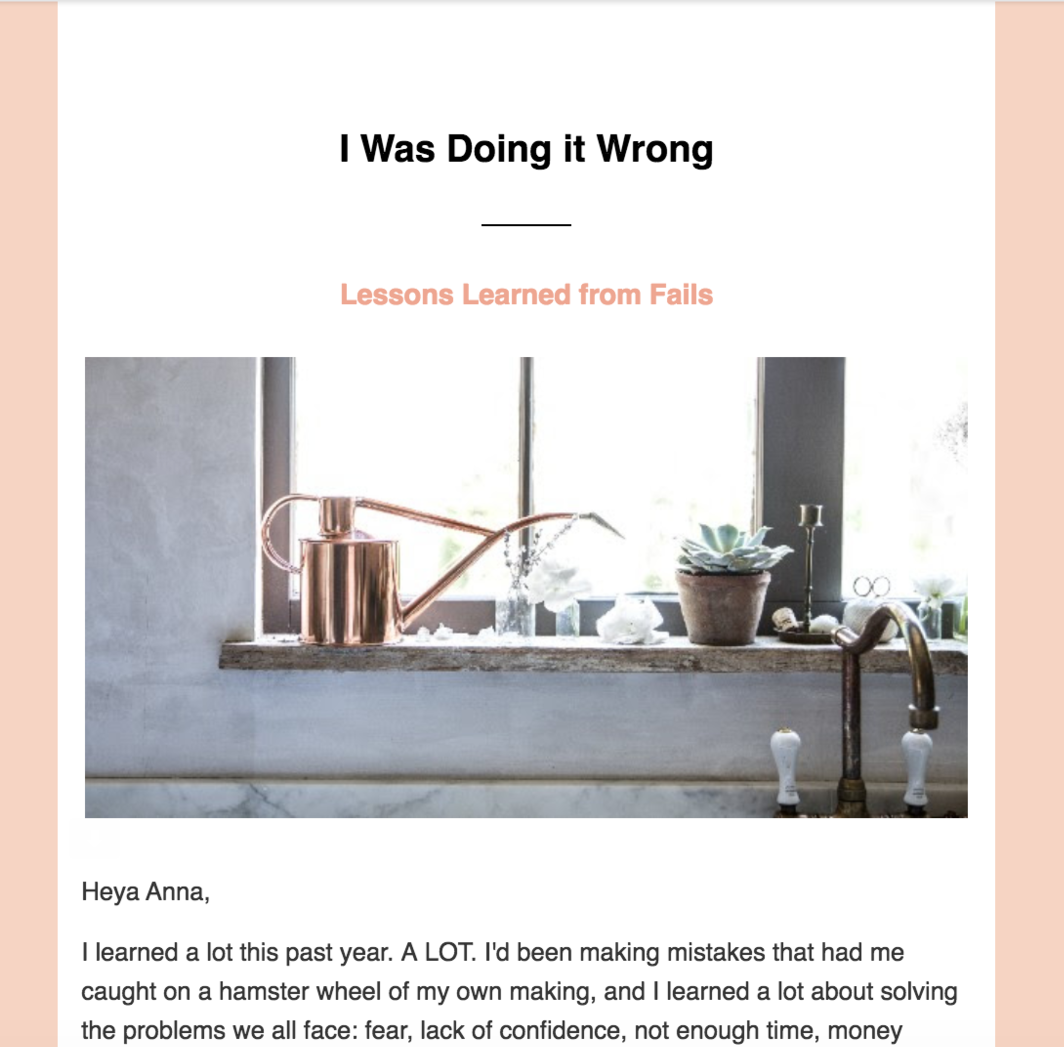Beth Kirby's email arrived this morning.
There was a time, to be honest not that long ago, that I looked forward to opening up my email account(s). Sure, I subscribe to a fair few newsletters and alerts that ping my inbox and provide a sense of distraction, whether I am looking for it or not, from work related missives. But before 2018 no one hassled me.
This year I'm being hassled.
Blame it on the energetic (read: manic) entrepreneur. They are the hungry lone wolf with an idea, a sense of mission and a sales target. Given my field, this entrepreneur – on the blogging/instagram/workshops/coffee table lifestyle brand book circuit – is always a female creative.
Usually, I am lured in with a freebie, a well worn and successful technique to get hold of my email address. Click for: SIMPLE WAYS TO RULE INSTAGRAM. Download the freebie guide to Strategy/Filters/Hashtags/Blah blah etc etc.
Next thing I know I'm deep in someone's Sales Funnel. Now that I've got the guide, the one that told me I need to proper camera to take photos for my social media feed, I can purchase some Lightroom presets for only $270. Bargain. Do you know how hard they worked on perfecting those? Years! Do they work? 780,000 followers on Instagram say YES!
Don't I want to be successful? C'mon. There's room at the top.
As a communications peep I'm particularly interested in decorum, and the shifting goal posts of culture. I live by the credo: try not to be a pest. This tribe though, schooled in Resilience training, are persistent. Persistence, I can only guess, must pay off.
The Campaign Monitor/Mailchimp missives arrive several times a week. In the early days I'd email back, messages like "You're coming on a bit strong. Could you you send me fewer emails?" Fewer emails is never an option. You are either all in or out. I unsubscribed.
Getting to know these frenemies has been instructive. I've become increasingly fascinated by the tone, techniques and language of the genre, the necessity of autobiography. Self declared experts are not wall flowers. There is always a before and after. Before either involves working for the Man – regular paid employment stymies creativity – and/or is a variation on the Lost Years. Unfocussed, gin-soaked, depressed or just aimless. Somehow I thought that's what the twenties were for; I was mistaken. After is awesome. Being Your Own Boss, Living Your Best Life.
This is a space where failure is celebrated only in so far as it serves to strengthen the contrast with the success that follows.
The thing is, with the traditional structures of moral and 'lifestyle' guidance – church and newspapers long in decline – there is undeniably a counsel vacuum. I'm as vulnerable as the next person to well meaning advice. I mean, how should I live my life?
This morning after Beth Kirby shared some chestnuts with me, she's had some epiphanies (You CAN'T escape pain) and I read her plea to fill out a short survey so she can SERVE me better I started on her Guide to a Slow Morning Routine. It occurred to me, it's true, like a bunny in the headlights: I can't escape. The pain I feel when I look into my inbox, it's real.













